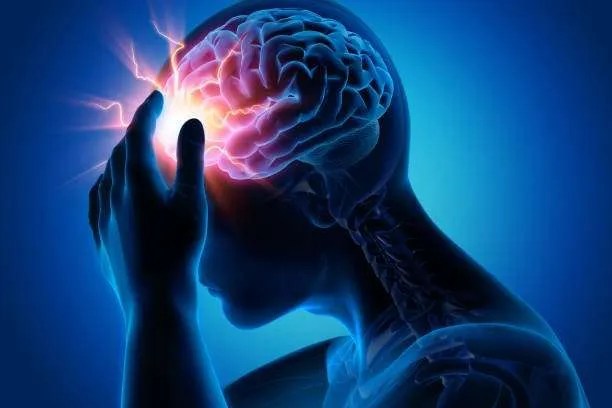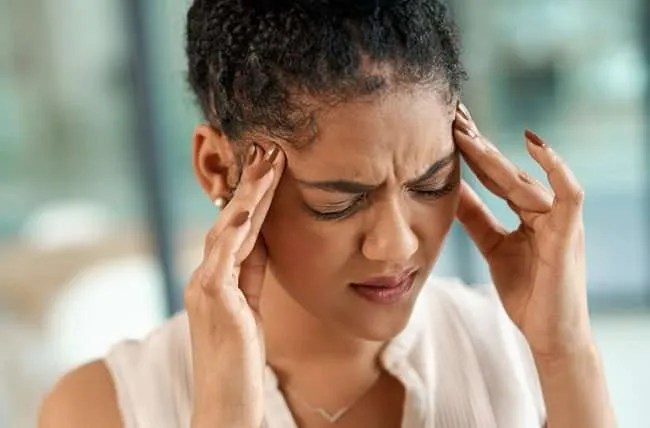
General Health Blog
Migraine: The Facts about Migraine
Migraine
Migraines are a type of headache that can be debilitating. They often have a variety of symptoms. People who do not have experience with migraines, may think the individual affected is exaggerating or even faking their pain. It’s important to understand the facts about it so you can take steps to prevent or manage them both for you or your loved ones.
Migraines affect people differently, but there are some commonalities such as: intense throbbing or pulsing sensation on one side of head; nausea/vomiting; sensitivity to light and sound; blurred vision across both eyes. If all these symptoms occur at once for more than an hour it could mean a person has a migraine.

What is the difference between migraines and headaches?
Migraine headaches are a neurological disease which affects roughly 38 million Americans alone. Headache is another term for pain in any region of the head, neck or face and can result from a variety of causes including fatigue, stress, lack of sleep and even anxiety. Migraines however tend to be more severe due to their lasting longer than other types of headache.
The most obvious difference between migraine headaches and other kinds like tension or sinus, for example, is how intense they can be. They typically last longer than just a few hours but less than three days in many cases. The severity of pain associated with them also sets it apart from others!
What is an aura?
Migraine aura means symptoms that occur before an attack including seeing zigzag lines across both eyes.
Can migraine lead to death or comas?
Migraine can’t lead to death or a coma. But it has been known that people who suffer from it have experienced seizures during an attack which is why anyone suffering from severe headaches should consult a doctor immediately
Causes of Migraine
The exact cause or trigger for it isn’t known; however, most medical professionals agree that they’re caused by changes in brain chemicals (neurotransmitters) and blood vessels that start with something called cortical spreading depression (CSD). This happens when nerve cells send out impulses causing localized “depression” which expand across the surface area of the brain. This causes pain receptors to fire off signals which are then sent back up the spinal cord into various parts of the body causing migraine symptoms.




Types of Migraine
There are different types, however, we have 2 main types which are classic and common.
Common (Migraine without aura)
Most migraines are common. With common migraines people feel a throbbing pain on one side of the head. The pain ranges from moderate to intense. The pains may increase and get worse if the person engages in normal physical activity. Other symptoms may include nausea, vomiting and intense sensitivity to light and sound. It may also last from a few hours to Three days if it is not treated. A common migraine doesn’t start with an aura.
Classic (Migraine with aura)
A Classic migraine headache often comes with warning signs or “aura” such as seeing zigzag lines across both eyes which can be quite common among sufferers. An aura may start up to 30 minutes before they have a migraine.
Menstrual Migraine
Women who suffer from migraines during their menstrual cycle tend to get them around time when their period is due and can often get them before, during and after their period. This is likely due to the change in hormones which cause a rise in serotonin levels and estrogen.
Ocular Migraine
This type occurs when you see zigzag lines across both eyes sometimes with other symptoms like nausea, vomiting, dizziness and light sensitivity. This form of migraine is rare and sometimes leads to loss of vision in one eye. However, this loss do tend to be temporal.
Chronic Migraine
These are defined by having at least 15 days of migraine per month, with some sufferers getting up to 18 attacks a month. It’s important to note that this type can last for hours or even days and be extremely debilitating physically and psychologically too. The key here is prevention because once you start getting them these kind of headaches it can become quite difficult to get rid of!
Abdominal Migraine
Abdominal migraines are a type of headache that triggers pain in the abdomen and is often mistaken for stomach aches or gas pains. The most common age range to experience these kind of headaches tends to be between 15-19 which can last up to 72 hours!
Treatment of Migraines
They are treatable with both medications and natural remedies.
Natural Supplements
The most effective treatments include magnesium supplements daily (to relax blood vessels) and lavender oil to relieve stress.
Magnesium has long been known as a supplement that helps relax blood vessels and muscles. So it’s no surprise this was found effective in reducing migraines too! The results showed daily magnesium supplementation reduced monthly migraine days by nearly half (42%).
Research has found that some vitamins, minerals, and herbs can prevent or treat migraines. Also supplements containing riboflavin, coenzyme Q10, and melatonin.
Click here to buy magnesium supplement online
Preventive Medicines
Where the head aches are persistent for days to a month, a doctor may recommend medicines to reduce and make the head aches less severe. These medicines may include blood pressure medicines, anti-depressants and anti-seizures meds.
Single-pulse transcranial magnetic stimulation (sTMS)
This is a device placed at the back of your head when you start to notice auras. The device sends magnetic pulse to the brain in order to reduce or stop the pains.




Migraine Risk Factors
Risk factors include:
- Allergies.
- Changes in the weather.
- Menstrual cycle fluctuations.
- Certain medications which can increase the chances of getting attacks including birth control pills, blood pressure medication & analgesics.
- Women are highest risk group. They are 3 times more likely to get migraine than men.
- Genetic predisposition we see this with Families with a history of migraines.
Preventing Migraine
Migraine can be prevented in many different ways.
- Make sure you are eating well with lots of fruit and veg that provide your body with the nutrients it needs to function properly.
- Get plenty of exercise as this is a great way not only prevent migraine but also help reduce pain once an attack has begun by releasing endorphins into the brain which acts like morphine for the headaches.
- Avoid too much stress in your life because studies have shown that high levels of cortisol (a hormone released when we feel stressed) increases risk factors for developing headache disorders such as chronic daily headaches so even if you’re feeling really down or anxious during one of these attacks don’t forget about yourself.
- Meditation, yoga, tai chi and mindful breathing is another way to go.
- Always get enough sleep.
- Avoid taking too many painkillers that can actually cause more problems than they solve.
- Drinking plenty of fluids and having a warm bath with lavender oil as this will release tension in your muscles.
Summary
Migraines are a severe headache that can last from 4 to 72 hours. These headaches tend to worsen as the day goes on and often have accompanying symptoms including nausea, vomiting, and sensitivity to light or sound, dizziness, numbness in one side of the head, impaired vision or hearing.
There is no way to prevent migraines 100% of the time but there are ways you can reduce your risk for getting these debilitating headaches; Like using magnesium supplements which has shown promising results in reducing both pain intensity and frequency.
We offer many different migraine-specific supplements at our online store so you know where to turn when it hits again!




Click Here To Visit HEALTH-PLANET Natural Solutions Online Store
Leave a Reply
You must be logged in to post a comment.